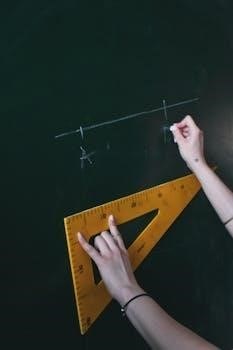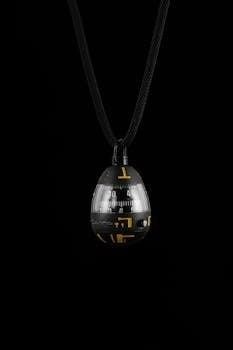Finding the right belt size can be confusing, but it doesn’t have to be!
This guide provides simple methods to accurately determine your belt size,
ensuring a comfortable and stylish fit.
Learn how to measure correctly and avoid common sizing mistakes.
Belt sizing can often seem like a mystery, differing significantly from pant sizes.
Understanding the nuances of belt measurements is crucial for achieving the perfect fit and ensuring both comfort and style.
Many people are surprised to learn that belt size rarely corresponds directly to waist size, leading to confusion and ill-fitting belts.
This introduction aims to demystify the process, providing clarity on how belts are sized and why accurate measurement is essential.
Whether you’re purchasing a new belt or determining the size of an existing one, grasping the fundamentals of belt sizing will save you time and frustration.
Various brands employ different sizing methods, adding to the complexity.
We’ll explore these variations and offer practical tips for navigating the sizing landscape.
From understanding how to measure an existing belt to using your pant size as a starting point, this section will equip you with the knowledge needed to confidently select the right belt size.
By mastering these basic principles, you can avoid the common pitfalls of belt sizing and ensure that every belt you choose complements your wardrobe perfectly.
We will also touch on how different styles of belts can impact sizing considerations.
Why Accurate Belt Measurement Matters
Accurate belt measurement is paramount for several reasons, extending beyond mere aesthetics.
A properly sized belt enhances comfort, prevents wardrobe malfunctions, and contributes to a polished appearance.
An ill-fitting belt, whether too tight or too loose, can be uncomfortable and distracting.
A belt that is too tight can restrict movement and cause discomfort around the waist, while a belt that is too loose offers inadequate support and may not stay in place.
Beyond comfort, accurate measurement ensures that your belt functions correctly.
A belt that is the correct size will hold your pants securely, preventing them from slipping down and maintaining a neat and professional look.
Inaccurate measurements can lead to a belt that is either too short, leaving you unable to fasten it, or too long, resulting in excessive overlap and an untidy appearance.
Moreover, the longevity of your belt is influenced by accurate sizing.
A belt that is constantly strained due to being too small or repeatedly adjusted due to being too large is more likely to wear out quickly.
Investing time in precise measurement, therefore, protects your investment in the belt itself.
Accurate measurement also plays a role in online shopping.
Method 1⁚ Measuring an Existing Belt
Measuring an existing belt that fits you well is often the easiest and most reliable way to determine your ideal belt size.
This method bypasses the inconsistencies that can arise when relying on pant sizes or waist measurements alone.
To begin, select a belt that you currently wear and find comfortable.
Lay the belt on a flat, hard surface, such as a table or countertop.
Ensure the belt is lying straight and that there are no kinks or bends that might distort the measurement.
Next, using a flexible measuring tape, carefully measure the distance from the buckle’s point of attachment to the belt (where the buckle connects to the leather or material) to the hole that you typically use to fasten the belt.
It is crucial to measure to the hole you use most frequently, as this represents your actual waist size when wearing that particular belt.
Record this measurement in inches or centimeters, depending on your preference.
This measurement represents your ideal belt size.
It’s important to note that belt sizes typically refer to the length from the buckle to the middle hole, allowing for some adjustability.
Therefore, the measurement you obtain from your existing belt can be used directly as your target belt size when purchasing a new one.

Step-by-Step Guide to Measuring an Existing Belt
Follow these simple steps to accurately measure your existing belt for a perfect fit in your next purchase.
First, gather your materials⁚ you’ll need the belt you wish to measure, a flexible measuring tape (cloth or plastic), and a flat, stable surface.
Lay the belt down on the flat surface, ensuring it is fully extended and as straight as possible.
Smooth out any curves or kinks in the belt to ensure an accurate measurement.
Next, locate the point where the buckle attaches to the belt.
This is usually where the leather or material folds over and is secured to the buckle frame.
Place the end of the measuring tape at this point.
Now, extend the measuring tape along the length of the belt to the hole you use most frequently.
This is the hole that provides the most comfortable and secure fit when you wear the belt.
Take note of the measurement at this hole.
This measurement, typically in inches or centimeters, represents your ideal belt size.
It is crucial to read the measurement accurately, ensuring you are looking at the correct mark on the measuring tape.
Record this measurement for future reference.
When purchasing a new belt, use this measurement as your guide.
Remember that belt sizes often correspond to the measurement from the buckle attachment point to the middle hole of the belt, allowing for some adjustability.
Method 2⁚ Measuring Your Waist for Belt Size
If you don’t have an existing belt to measure, don’t worry! You can still determine your ideal belt size by measuring your waist directly.
This method is especially useful when buying your first belt or when your waist size has changed.
To begin, you’ll need a flexible measuring tape, preferably a cloth or vinyl one, as it will conform to your body’s curves.
Stand in a relaxed, natural posture, and locate the area where you typically wear your belts.
This is usually around your natural waistline or slightly lower, depending on your preference and the style of pants you wear.
Wrap the measuring tape around your waist at this level, ensuring that the tape is snug but not too tight.
The tape should lie flat against your skin, without any sagging or bunching.
It’s best to measure directly against your skin or over thin clothing to get the most accurate measurement.
Avoid measuring over bulky clothing, as this can add extra inches and lead to an incorrect belt size.
Once the measuring tape is in place, exhale gently and take the measurement.
Read the number on the tape where it overlaps, making sure the tape is straight and level.
This measurement represents your waist size.
To determine your belt size, add 2 to 4 inches to your waist measurement.
This allows for the thickness of your clothing and provides some extra room for adjustment.
Using a Measuring Tape to Determine Waist Size
To accurately determine your waist size for a belt, grab a flexible measuring tape.
Stand naturally and breathe normally.
Don’t suck in your stomach or flex, as this will lead to an inaccurate measurement.
Locate your natural waistline, which is typically the narrowest part of your torso, usually just above your belly button.
If you’re unsure, bend to the side, and the crease that forms indicates your natural waist.
Wrap the measuring tape around your waist at this point, ensuring it’s snug but not too tight.
The tape should be parallel to the floor and lie flat against your skin.
Avoid wearing bulky clothing, as it will skew the measurement.
If you must measure over clothing, wear something thin and form-fitting.
Once the tape is in position, look at the point where the tape overlaps.
Record this measurement in inches or centimeters, depending on your preference.
Double-check the measurement to ensure accuracy.
It’s always a good idea to measure two or three times to confirm your size.
Remember, this measurement is your waist size, not necessarily your belt size.
Most belt manufacturers recommend adding 2 to 4 inches to your waist size to determine your belt size.
This allows for the thickness of your clothing and provides some extra room for adjustment.
For example, if your waist measures 34 inches, you would typically purchase a size 36 or 38 belt.

Method 3⁚ Using Pant Size to Estimate Belt Size

Estimating your belt size based on your pant size is a convenient method, although it’s not always the most precise.
Pant sizes can vary between brands and styles, so it’s essential to understand the potential for discrepancies.
However, it can provide a reasonable starting point when you don’t have access to a measuring tape or an existing belt.
Generally, the rule of thumb is to add 2 inches to your pant size to determine your approximate belt size.
For instance, if you typically wear size 34 pants, you would estimate your belt size to be 36 inches.
This “pant size plus two” rule is a widely used guideline, but it’s crucial to acknowledge its limitations.
Some individuals may find that this rule works perfectly, while others may need to adjust the estimation slightly.
Consider the rise of your pants when using this method.
Low-rise pants sit lower on your hips, which may require a slightly larger belt size compared to high-rise pants that sit closer to your natural waist.
Also, think about the fit of your pants.
If you prefer a looser fit, you might need a slightly larger belt.
Keep in mind that this method is just an estimation.
For the most accurate belt size, it’s always recommended to measure your waist with a measuring tape or measure an existing belt that fits you well.
If you’re unsure, it’s generally better to err on the side of caution and choose a slightly larger belt size, as you can always add extra holes if needed.
Ultimately, using pant size to estimate belt size can be a quick and easy way to get a general idea, but it’s not a substitute for precise measurement.

Understanding the Pant Size Plus Two Rule
The “pant size plus two” rule is a common guideline for estimating belt size, but it’s essential to understand its nuances and limitations.
This rule suggests adding 2 inches to your typical pant waist size to determine your corresponding belt size.
For example, if you wear size 32 pants, the rule indicates you should purchase a size 34 belt.
While seemingly straightforward, this method relies on several assumptions that may not always hold true.
Firstly, pant sizes themselves can be inconsistent across different brands and styles.
Vanity sizing, where manufacturers label clothing smaller than its actual measurements, can skew the accuracy of this rule.
Secondly, the rise of your pants plays a crucial role.
Low-rise pants sit lower on the hips, often requiring a slightly larger belt than high-rise pants that sit at the natural waist.
Therefore, the “plus two” rule may need adjustment depending on your preferred pant style.
Thirdly, personal preference and body shape influence the ideal belt fit.
Some individuals prefer a snug fit, while others prefer a looser fit.
Additionally, those with certain body shapes may find that the rule doesn’t provide an accurate estimate.
It’s important to remember that this rule is a starting point, not a definitive solution.
Always try on belts whenever possible to ensure a comfortable and secure fit.
When purchasing online, consult the brand’s specific sizing chart and consider customer reviews for insights on fit accuracy.
Ultimately, while the “pant size plus two” rule can be a useful guideline, it’s crucial to consider individual variations and prioritize actual measurements for the most accurate belt size determination.
Belt Size Charts and Conversions
Belt size charts and conversions are essential tools for finding the perfect fit, especially when shopping online or encountering unfamiliar sizing systems.
These charts typically correlate waist measurements in inches or centimeters to corresponding belt sizes, often expressed in inches.
However, it’s crucial to understand that belt sizing can vary significantly between brands and manufacturers.
Therefore, relying on a generic size chart may not always guarantee an accurate fit.
Different charts may use different measurement points or account for variations in buckle size and belt style.
When using a size chart, it’s always best to consult the specific chart provided by the brand or retailer from whom you’re purchasing the belt.
Pay close attention to the measurement instructions accompanying the chart, ensuring you measure your waist accurately at the point where you typically wear your belt.
Conversion charts are particularly helpful when dealing with international sizing systems.
For example, converting from European to US sizes or vice versa can prevent ordering the wrong size.
These charts provide equivalent measurements across different systems, allowing for accurate conversions.
In addition to standard size charts, some brands offer specialized charts for specific belt styles, such as those with wider bands or unique buckle designs.
These charts may account for the additional length required for the style, ensuring a comfortable and secure fit.
When in doubt, it’s always advisable to measure your waist or an existing belt and compare it to the brand’s size chart.
Customer reviews can also provide valuable insights into the accuracy of the chart and the overall fit of the belt.
By utilizing belt size charts and conversions effectively, you can minimize the risk of ordering the wrong size and ensure a satisfying shopping experience.
Adjusting for Different Belt Styles and Rise
When determining your ideal belt size, it’s crucial to consider the style of belt you intend to wear and the rise of your pants or skirt.
Different belt styles, such as wide belts, skinny belts, or those with decorative buckles, can impact how the belt fits and feels.
Additionally, the rise of your pants, whether high-waisted, mid-rise, or low-rise, dictates where the belt will sit on your body, influencing the required belt length.
Wide belts, for instance, often require a slightly longer length to accommodate the extra material and ensure a comfortable fit.
Skinny belts, on the other hand, may need to be adjusted to prevent them from slipping or feeling too tight.
Belts with large or ornate buckles can also affect the overall length, as the buckle itself may add several inches to the total measurement.
The rise of your pants is another critical factor to consider.
High-waisted pants sit at or above your natural waistline, requiring a belt that fits snugly around your waist.
Mid-rise pants typically sit a few inches below the waist, necessitating a belt that sits comfortably on your hips.
Low-rise pants, which sit even lower on the hips, may require a longer belt to accommodate the lower placement.
To accurately adjust for different belt styles and rise, it’s essential to measure your waist or hips at the point where you intend to wear the belt.
Use a flexible measuring tape to determine the circumference, ensuring the tape is snug but not too tight.
When shopping for belts online, pay close attention to the product descriptions and sizing charts, noting any specific recommendations for different styles or rise heights.
Customer reviews can also provide valuable insights into how the belt fits and whether any adjustments are necessary.
By taking into account the style of belt and the rise of your pants, you can ensure a comfortable and stylish fit every time.

No Responses